Naturally I prefer 99 dB at a true 1 watt input (8 ohms) or even 0,5 Watt input (16 ohms).Hi,
My question is, are you looking for 99 dB at a true 1 watt input, or are you looking for 99 dB at 2.83 volts, even if the impedance is 4 ohms? Some of the suggestions above are 4 ohm tweeters, giving them a 3 dB "advantage", by drawing twice the power of an 8 ohm unit.
Naturally I prefer 99 dB at a true 1 watt input (8 ohms) or even 0,5 Watt input (16 ohms).
That's a tough one. It's hard to get enough flux in the gap, keep the moving assembly light enough while still having reasonable power handling & freedom from severe dome breakup modes, etc. The High Output Polycell tweeters are the most efficient 8-ohm 1" dome tweeters I have measured, and I've measured quite a lot of tweeters...
more pics of RCF's TW116 and it's a predecessor
I still want to know presently available model with that efficiency and sonic character (or a TW-116 successor like used by the German manufacturer "Glockenklang")
about
http://www.audiocostruzioni.com/r_s/diffusori/diffusori-2/rcf-br110/rcf-br110.htm
you will find an vintage two-way RSF loudspeaker (BR-110) used the predecessor of RCF's TW-116
I still want to know presently available model with that efficiency and sonic character (or a TW-116 successor like used by the German manufacturer "Glockenklang")
about
http://www.audiocostruzioni.com/r_s/diffusori/diffusori-2/rcf-br110/rcf-br110.htm
you will find an vintage two-way RSF loudspeaker (BR-110) used the predecessor of RCF's TW-116
Attachments
-
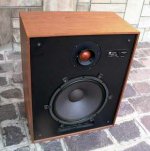 rcf br110.jpg19.2 KB · Views: 977
rcf br110.jpg19.2 KB · Views: 977 -
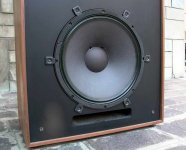 RCF BR 110 dettaglio bass.jpg37.5 KB · Views: 785
RCF BR 110 dettaglio bass.jpg37.5 KB · Views: 785 -
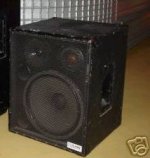 RCF TW116 EAW153z.jpg9.5 KB · Views: 847
RCF TW116 EAW153z.jpg9.5 KB · Views: 847 -
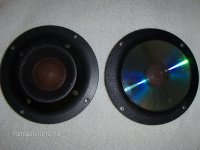 RCF TW116 front.jpg306.7 KB · Views: 821
RCF TW116 front.jpg306.7 KB · Views: 821 -
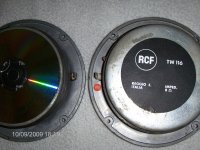 RCF TW116 rear.jpg283.3 KB · Views: 771
RCF TW116 rear.jpg283.3 KB · Views: 771 -
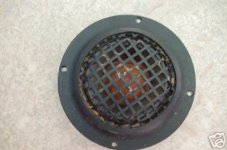 RCF TW116 vorne.jpg18.2 KB · Views: 129
RCF TW116 vorne.jpg18.2 KB · Views: 129 -
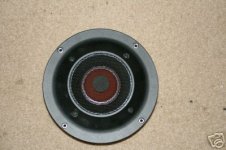 RCF TW-116 ebay USA.jpg21.6 KB · Views: 121
RCF TW-116 ebay USA.jpg21.6 KB · Views: 121 -
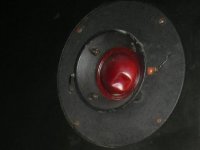 RCF tweeter BR110.jpg28.4 KB · Views: 206
RCF tweeter BR110.jpg28.4 KB · Views: 206 -
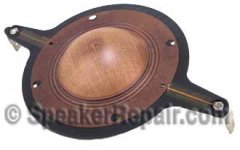 rcf_dm_39front for TW116.jpg7.6 KB · Views: 185
rcf_dm_39front for TW116.jpg7.6 KB · Views: 185 -
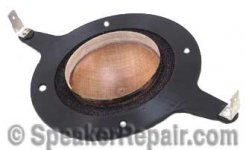 rcf_dm_39b for TW116.jpg7.3 KB · Views: 127
rcf_dm_39b for TW116.jpg7.3 KB · Views: 127
Last edited:
Ribbon tweeters with 95-100 db/watt SPL can be purchased or DIY built. Vertical dispersion limitations of ribbons is a design consideration.
For dome tweeters.
Several papers have been published that use dual concentric NdFeB radial magnets in a speaker motor design that looks attractive for high efficiency tweeters and midranges. With powerful N50 grade radial magnets 2T in the gap with an underhung coil is possible. This motor structure looks very promising for home audio.
Performances and Design of Ironless
Loudspeaker Motor Structures
B. Merit, G. Lemarquand and V. Lemarquand
An Ironless Large Displacement
Flat Piston Loudspeaker
Mathias REMY(1;2), Guy LEMARQUAND(1), Gael GUYADER(2)
(1)LAUM, CNRS, Université du Maine
Av. O. Messiaen, 72085 Le Mans Cedex 9, France
For dome tweeters.
Several papers have been published that use dual concentric NdFeB radial magnets in a speaker motor design that looks attractive for high efficiency tweeters and midranges. With powerful N50 grade radial magnets 2T in the gap with an underhung coil is possible. This motor structure looks very promising for home audio.
Performances and Design of Ironless
Loudspeaker Motor Structures
B. Merit, G. Lemarquand and V. Lemarquand
An Ironless Large Displacement
Flat Piston Loudspeaker
Mathias REMY(1;2), Guy LEMARQUAND(1), Gael GUYADER(2)
(1)LAUM, CNRS, Université du Maine
Av. O. Messiaen, 72085 Le Mans Cedex 9, France
So what you are really after is a compression driver..more pics of RCF's TW116 and it's a predecessor
I still want to know presently available model with that efficiency and sonic character (or a TW-116 successor like used by the German manufacturer "Glockenklang")
about
http://www.audiocostruzioni.com/r_s/diffusori/diffusori-2/rcf-br110/rcf-br110.htm
you will find an vintage two-way RSF loudspeaker (BR-110) used the predecessor of RCF's TW-116
So what you are really after is a compression driver..
+1
If you need that kind of sensitivity, you're probobly crossing to a larger dia driver of the pro type, and will require a lowish XO point.....where conventional domes don't play well and ribbons don't even get invited to the party. Todays non-metallic diaphram CD's when mated to the right waveguide outperform domes in every measurable category.......except for the elusive HOM which has yet to be identified with any level of certainty other than hig end audiophoolery.
The tweeter he is striving to emulate is a compression driver.
Basically it's a modified, (vc termination toward the "front"), phenolic diaphragm compression driver operated from the rear, and obviously without the rear chamber.
The bastanis he has linked to (with pictures), are compression drivers operated with the normal forward compression exit (and NO horn/waveguide), and the rear chamber removed (..operating in Dipole).
Basically it's a modified, (vc termination toward the "front"), phenolic diaphragm compression driver operated from the rear, and obviously without the rear chamber.
The bastanis he has linked to (with pictures), are compression drivers operated with the normal forward compression exit (and NO horn/waveguide), and the rear chamber removed (..operating in Dipole).
Last edited:
The tweeter used in Glockenklang's "Acoustic Art MK-III" and "Bass Art Classic Box" is for me one of the best tweeters of the world (with most natural sonic character and provided very high efficiency at the same time - nearly 100 db/1W/1m).
Regarded the "Glockenklang" website more exactly navigation advices to find this tweeter is necessary - go to
Products - GLOCKENKLANG
Navigation advices:
1) Bassline
2) "Acoustic Art MK III" or "Bass Art Classic Box" (99 db)
The other dome tweeters uses that size uses mostly other material for the dome and therefore the sound isn't so clear and tight (like that one from URLs from my post #10 and that one showed about
Large domes (http_www.troelsgravesen.dk/large_domes_htm).
For me is surpriced, why not more manufacturers offer such tweeters have sonic character like Glockenklang.
Tweeters with similare efficiency without horn are only available as Ribbon and to get from Stage Accompany, ESS Air-Motion and Alcone
AMT ESS-1 vs. Stage Accompany SA8535 (SA 8535) - diyAudio
Stage Accompany: the end or not? - diyAudio
Alcons Audio - evolutionary audio solutions™
Are now more dome models from this caregory available ?? - I still prefer traditional materials for the dome (diaphragm) like cloth, paper, phenol and kevlar or similar - the main important thing for me is, there is no metal in use.
Regarded the "Glockenklang" website more exactly navigation advices to find this tweeter is necessary - go to
Products - GLOCKENKLANG
Navigation advices:
1) Bassline
2) "Acoustic Art MK III" or "Bass Art Classic Box" (99 db)
The other dome tweeters uses that size uses mostly other material for the dome and therefore the sound isn't so clear and tight (like that one from URLs from my post #10 and that one showed about
Large domes (http_www.troelsgravesen.dk/large_domes_htm).
For me is surpriced, why not more manufacturers offer such tweeters have sonic character like Glockenklang.
Tweeters with similare efficiency without horn are only available as Ribbon and to get from Stage Accompany, ESS Air-Motion and Alcone
AMT ESS-1 vs. Stage Accompany SA8535 (SA 8535) - diyAudio
Stage Accompany: the end or not? - diyAudio
Alcons Audio - evolutionary audio solutions™
Are now more dome models from this caregory available ?? - I still prefer traditional materials for the dome (diaphragm) like cloth, paper, phenol and kevlar or similar - the main important thing for me is, there is no metal in use.
Maybe this one, but beaming is probably not funny.
http://www.expolinear.de/images/stories/expolinear rt-10 pro.pdf
http://www.expolinear.de/images/stories/expolinear rt-10 pro.pdf
Here's a 96dB model (4 ohms) that's pretty sweet. I've worked with it quite a bit and it's pretty good.Are now more dome models from this caregory available ?? - I still prefer traditional materials for the dome (diaphragm) like cloth, paper, phenol and kevlar or similar - the main important thing for me is, there is no metal in use.
Speaker Stuff

With Horn:
Building A Budget (Super?) Tweeter Reaching the stratosphere! Article By Jeff Poth
Thank you for this advice. But this isn't a dome tweeter.Maybe this one, but beaming is probably not funny.
404 - Fehler: 404
For a cloth dome (textil dome) good efficiency - thank you for this advice.Here's a 96dB model (4 ohms) that's pretty sweet. I've worked with it quite a bit and it's pretty good.
With Horn:
Building A Budget (Super?) Tweeter Reaching the stratosphere! Article By Jeff Poth
who have heard this dome tweeters:
Audio Note
Audio Note Kits - Audio Note Speaker Kit 04
and where I can download datasheets such frequency response and THD curvatures?
Vifa's DXT25TG09-04 is ~94 dB
http://www.parts-express.com/pdf/264-1020s.pdf
It is a humble cousin to the Scan Speak D2604/833000 which is ~93 dB
http://www.parts-express.com/pdf/264-1020s.pdf
It is a humble cousin to the Scan Speak D2604/833000 which is ~93 dB
Last edited:
suprafox gold platedome 98dB.
Tweeter TG1 SUPRAVOX
Tweeter TG1 SUPRAVOX
An externally hosted image should be here but it was not working when we last tested it.
B&C speaker have still no metal diapharms for their HF drivers:
1) DE-5
B&C SPEAKERS
2) DE 250
B&C SPEAKERS
http://www.parts-express.com/images/item_standard/294-633_s.jpg
B&C MMDDE2508M Diaphragm For DE250-8
3) DE160
B&C SPEAKERS
http://i45.tinypic.com/2n1wf8g.jpg
4) DE12
B&C SPEAKERS
5) DE120
B&C SPEAKERS
6) DE10
B&C SPEAKERS
B&C MMD10-8 Diaphragm For DE10-8 294-628
actually it must be possible to create a very high efficiency dome tweeter with help of this magnets, recone kits and some few other stuff like front plate and various tweaking work (go to the pics to post #15 and #19 for looking the only example, that I have found until now).
Where are to find more examples in that kind like showed by follow URL ?
http://www.6moons.com/audioreviews/bastanis/prometheus.html
any news?
1) DE-5
B&C SPEAKERS
2) DE 250
B&C SPEAKERS
http://www.parts-express.com/images/item_standard/294-633_s.jpg
B&C MMDDE2508M Diaphragm For DE250-8
3) DE160
B&C SPEAKERS
http://i45.tinypic.com/2n1wf8g.jpg
4) DE12
B&C SPEAKERS
5) DE120
B&C SPEAKERS
6) DE10
B&C SPEAKERS
B&C MMD10-8 Diaphragm For DE10-8 294-628
actually it must be possible to create a very high efficiency dome tweeter with help of this magnets, recone kits and some few other stuff like front plate and various tweaking work (go to the pics to post #15 and #19 for looking the only example, that I have found until now).
Where are to find more examples in that kind like showed by follow URL ?
http://www.6moons.com/audioreviews/bastanis/prometheus.html
any news?
Now that is a lesson in patience.Since the pathway to efficiency is minimum mass plus maximum force and diaphragm area there is little leeway when directivity issues are considered.There was an interesting approach from a Polish speaker manufacturer,Tongue,that utilised a form of low mass cellulose material for the diaphragm ;unfortunately I don't have any more details.The E.S.S./Heil AMT in a revised format (more Bl product) is a contender.Also look at this Patent US 6,785,397 B2 ,which has possibilities.
- Home
- Loudspeakers
- Multi-Way
- 99db dome tweeter without titanium and without horn ?